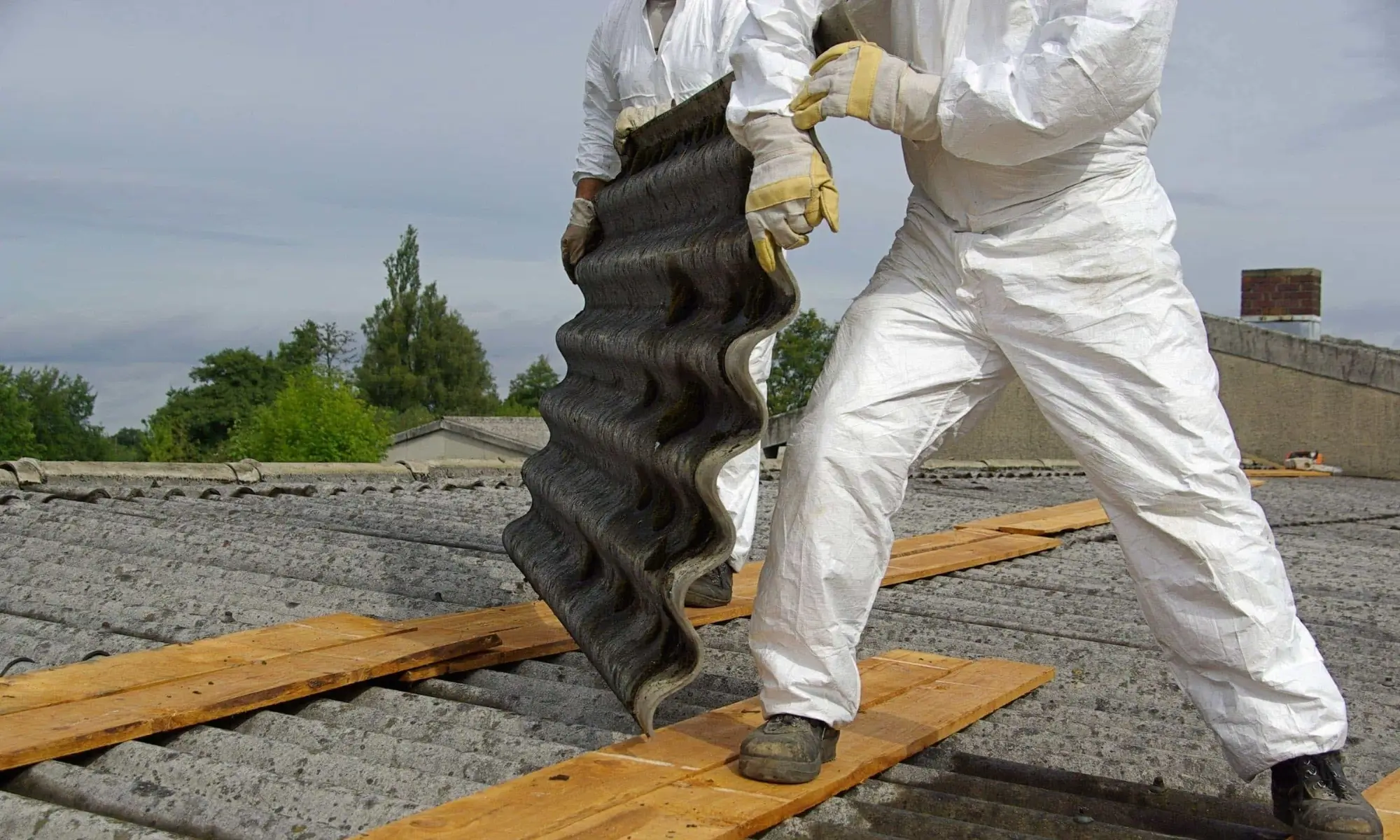Asbestos, a group of naturally occurring fibrous minerals, has been widely used in various industries due to its durability, heat resistance, and insulating properties. However, asbestos poses significant health risks, particularly when its fibers become airborne and are inhaled. This article delves into the concept of non-friable asbestos, exploring its definition, associated health risks, and common examples of materials that contain non-friable asbestos.
What’s Non-Friable Asbestos?
Non-friable asbestos refers to asbestos-containing materials in which the asbestos fibers are tightly bound or chemically bonded within a matrix of other substances, making them less likely to become airborne under normal conditions. Unlike friable asbestos, which can be easily crumbled or powdered by hand pressure and poses a higher risk of fiber release, non-friable asbestos remains stable and intact unless it is disturbed or damaged through activities such as cutting, sanding, or demolition.
Common examples of non-friable asbestos materials include vinyl floor tiles, asbestos cement (AC) sheets and shingles, textured paints, automotive brake pads, and certain pipe insulations. While non-friable asbestos is generally considered less hazardous than friable forms, it still poses significant health risks if fibers become airborne and are inhaled, potentially leading to serious respiratory diseases like asbestosis, lung cancer, and mesothelioma.
Health Risks Associated with Non-Friable Asbestos
Exposure to asbestos, whether from friable or non-friable sources, can lead to severe health issues. The primary health risks associated with non-friable asbestos include:
1. Asbestosis
A chronic lung disease caused by inhaling asbestos fibers, leading to scarring of lung tissue. Symptoms include shortness of breath, persistent cough, and chest tightness. Asbestosis can be debilitating and is often fatal in severe cases.
2. Lung Cancer
Prolonged exposure to asbestos significantly increases the risk of developing lung cancer. The risk is especially high for individuals who smoke and have been exposed to asbestos.
3. Mesothelioma
A rare and aggressive cancer affecting the lining of the lungs (pleura) or abdomen (peritoneum). Mesothelioma is almost exclusively linked to asbestos exposure and has a poor prognosis.
4. Other Cancers
Exposure to asbestos has also been associated with cancers of the larynx, ovary, and gastrointestinal tract.
5. Pleural Diseases
These include pleural plaques (thickened areas on the lung lining), pleural effusion (fluid buildup), and other conditions affecting the pleura, which can cause pain and restrict lung function.
How Non-Friable Asbestos Becomes a Health Hazard
While non-friable asbestos is less likely to release fibers compared to friable forms, it can still become hazardous under certain conditions:
- Damage or Disturbance: Cutting, sanding, drilling, or demolishing non-friable asbestos-containing materials can release fibers.
- Aging and Deterioration: Over time, materials may degrade, increasing the likelihood of fiber release.
- Improper Maintenance: Failure to maintain or repair asbestos-containing materials can lead to their deterioration.
Examples of Non-Friable Asbestos-Containing Materials
Understanding where non-friable asbestos is commonly found can help in identifying potential exposure sources:
1. Building Materials
- Vinyl Floor Tiles: Often used in commercial and residential buildings, these tiles can contain asbestos in the backing material.
- Asbestos Cement Sheets and Shingles: Used for roofing and siding, these materials are durable and resistant to weathering.
- Textured Paints and Popcorn Ceilings: Applied for aesthetic purposes, these coatings may contain asbestos fibers.
2. Automotive Parts
- Brake Pads and Linings: Asbestos provides heat resistance and durability in brake components.
- Clutches and Gaskets: Used in vehicle engines and machinery, asbestos-containing parts contribute to performance under high temperatures.
3. Appliances
- Ovens and Heaters: Asbestos insulation is used to withstand high temperatures.
- Toasters and Microwaves: Older models may contain asbestos in their insulation materials.
4. Industrial Products
- Gaskets and Seals: Used in various machinery, these components can contain asbestos for its sealing properties.
- Pipe Insulation: Non-friable asbestos is often used to insulate pipes in industrial settings.
Safe Handling and Management of Non-Friable Asbestos
Proper management of non-friable asbestos is essential to minimize health risks:
1. Assessment and Identification
Before any renovation or demolition project, it’s crucial to identify the presence of asbestos-containing materials. Professional asbestos inspectors can conduct surveys and testing to determine the presence and condition of ACMs.
2. Encapsulation
Sealing asbestos-containing materials with an appropriate sealant can prevent fiber release. This method is suitable for non-friable asbestos in good condition.
3. Enclosure
Enclosing asbestos-containing materials with airtight barriers can also prevent fiber release. This approach is often used in walls and ceilings.
4. Safe Removal
In cases where encapsulation or enclosure is not feasible, professional removal may be necessary. Certified asbestos abatement contractors should handle the removal to ensure safety and compliance with regulations.
5. Regular Monitoring and Maintenance
Regular inspections and maintenance of asbestos-containing materials can help detect deterioration early, allowing for timely intervention to prevent fiber release.
Regulatory Framework and Guidelines
Governments and regulatory bodies have established guidelines and regulations to manage asbestos safely:
- Occupational Safety and Health Administration (OSHA): Sets standards for asbestos exposure in the workplace.
- Environmental Protection Agency (EPA): Regulates asbestos disposal and environmental release.
- Local and State Regulations: Additional rules may apply, varying by jurisdiction.
Compliance with these regulations is mandatory to ensure the safety of workers, residents, and the general public.
Conclusion
Non-friable asbestos, while less immediately hazardous than its friable counterpart, still presents significant health risks if not properly managed. Understanding the nature of non-friable asbestos, recognizing its common applications, and adhering to safety protocols are essential steps in mitigating exposure and protecting public health. Whether dealing with older buildings, automotive parts, or industrial products, awareness and proper handling of non-friable asbestos can prevent the severe health consequences associated with asbestos exposure.
Disclaimer: This article is intended for informational purposes only and does not constitute professional medical or legal advice. If you suspect the presence of asbestos in your environment, consult with qualified professionals for assessment and guidance.

